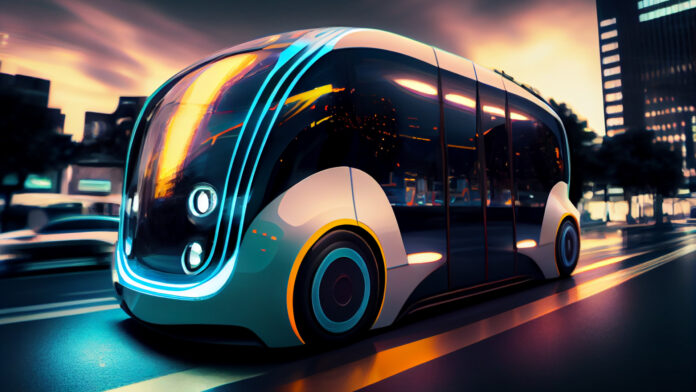An interesting press note across the news desk today from UK technology research group IDTechEx, which explores the continuing challenges to establish a coherent model for the global rollout of autonomous buses and robo-shuttles – that classic smart-city staple to redesign urban mobility with futuristic transport solutions. In the end, the crux of it is to convince governments to facilitate pilots and investors to scale them. Which is about the viability of the model in the first place, but also the vision and will of authorities to untangle all the red tape.
There were “once” over 50 “players” in the market, variously developing autonomous bus and robo-shuttles and teasing a “public transport revolution”, reckons IDTechEx. But commercial services have been slow to materialise and the number of providers has since declined, with the whole market “falling short of industry expectations”, it says. “Large-scale commercial testing has not been achieved,” writes Shihao Fu, analyst at IDTechEx, even as progressive “near-commercial” government-supported initiatives in Singapore, France, China, and South Korea show the way.
The full report from IDTechEx is available here; but here is a summary of some of its findings and recommendations about the extant challenges that face autonomous buses and robo-shuttles – if they are to deliver on their promise of “significant” cost and labour reductions for operators, and a broader view of smart-city sustainability. The quotes are from Fu, as indicated; the summary format and bullets are by RCR Wireless.
1 | The sheer complexity of urban transport
So here is the start-point, and the eternal challenge with public transport systems: how to overcome the complexities of urban sprawl, where cities have developed over centuries, and are reliant on varied and sometimes-antiquated road infrastructure. IDTechEx writes: “Roboshuttles need to overcome the uncertainties posed by dynamic routes and the performance challenges of navigating narrow urban streets. Testing in such areas, closer to residential zones, means these vehicles will be under greater public scrutiny.”
New mobility solutions – especially autonomous ones operating in busy environments – must gain public trust, clearly. “Buses face the challenge of maintaining relatively high speeds while ensuring the safety of dozens of passengers, which is crucial for public trust,” says IDTechEx. Which only comes with tests and proofs – which require national and local government support. Which in the end, as with all large-scale smart-city initiatives, is the killer factor; the technology has to be proven, the model has to be proven, and the authorities have to be willing.
2 | The ultimate proof of commercial viability
Some companies have successfully navigated the complexities surrounding autonomous buses and roboshuttles, securing government permits for testing, notes IDTechEx. As above, it cites “near-commercialization testing” – sometimes with real passengers, sometimes on ‘real’ streets – in Singapore, France, China, and South Korea. The market has a decade, the firm suggests, to prove its commercial viability to attract continued investment and backing, and to be endorsed ultimately as a legitimate option for mass urban transportation.
3 | The hard pursuit of government support
Mentioned already, the biggest challenge for new smart-city mobility providers is to gain municipal support – in terms of permits and red tape, collaboration and investment, and just in terms of pure vision. There are precedents, says IDTechEx: “proactive policies” in Shenzhen, Beijing, and Shanghai in China, included major investments in smart traffic signals and precision maps; “legal frameworks” in California, Florida, and Arizona in the US to outline rules on testing, safety, and liability; and legal frameworks and public-private funding in the UK for testing and deployment of autonomous transport solutions.
There are a couple of highlights, perhaps: Shenzhen in China has already launched commercial autonomous bus services, notes IDTechEx; the federal government in the US is working on nationwide standards to regulate autonomous vehicle technology; the autonomous bus route across the Forth Road Bridge in the UK is described as a “testament to the practical application of this technology”; designated specific zones have been designed in Singapore for testing autonomous buses and robo-shuttles. There is progress – is the point; but it only happens with enlightened and committed government intervention.
To flip-flop a concluding paragraph in the press note, IDTechEx writes that “results indicate strong potential for these solutions to transform public and industrial transportation sectors”, but that “key challenges… include the need for regulatory approvals and the readiness of infrastructure, particularly for remote operations on public roads.” Which says it all.
4 | The long-term value of short-terms gains
IDTechEx identifies two short-term commercial solutions to get the autonomous bus industry moving. These are to replace high-cost tram and light rail systems with autonomous buses, and to offer 24/7 autonomous bus services in industrial parks. The calculations with these proposals is that autonomous buses offer infrastructure savings of 50-80 percent compared with urban rolling stock, and that industrial parks are the perfect playgrounds, especially combined with charging solutions, to develop and cement new autonomous bus services.
It writes: “By eliminating the need for complex rail networks and replacing them with autonomous buses, cities can achieve a more flexible and cost-efficient public transport system… Industrial parks benefit from controlled environments, allowing autonomous buses to operate without human intervention.” It cites work in Norway (FusionProcessing project) to cover 75,000 kilometres of industrial parkland with autonomous shuttles, to carry 27,000 passengers. “The long-term vision [is for] fully remote operations without onboard safety drivers by 2028,” it writes.
The point is to focus on valuable urban point solutions for new autonomous mobility projects – to challenge the case for new rail infrastructure deployments, and to make a play for transit operations in self-contained, modern, and manageable out-of-town developments – in order to fast-track the business model, and accelerate rollout in broader geographies.

